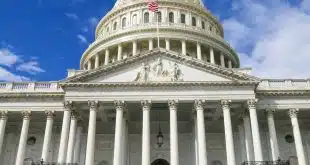PayPal’s bold new strategy for the physical point of sale faces daunting challenges that will require the young company to accept lower margins, work with ISOs, revamp systems, and chop transaction costs, says René M. Pelegero.
Unfortunately, ISOs perceive PayPal as the enemy. Thus, PayPal needs to develop, and quickly roll out, a well-thought-out ISO strategy.
René M. Pelegero, who left PayPal in 2011, is president and managing director of Retail Payments Global Consulting (RPGC) Group LLC, Woodinville, Wash. Reach him at renep@rpgc.com.
As a former PayPalian (yes, that is what PayPal employees call themselves), I am asked frequently about PayPal Inc.’s point-of-sale (POS) initiative and its prospects for success. Having worked for PayPal for five years, and as an interested outside company follower and industry observer, I have an opinion of this strategy and the challenges that lie ahead for PayPal.
Let me begin by saying I have great respect for PayPal and all the folks who work there. PayPal is uniquely positioned to not only change, but revolutionize, the payments space. The emergence of all things mobile, and the convergence of mobile and e-commerce payments at the POS, places PayPal in a position to deliver truly innovative payment solutions.
With the recent Home Depot pilot, PayPal proved that near field communication (NFC) is not needed to deliver novel payment alternatives at the POS. Reaction from Home Depot has been positive; so much so that the pilot is now being rolled out nationwide.
PayPal also has the loyalty and support of both consumers and merchants. Not all potential payment players have this. For example, Apple Inc. has fierce loyalty from its customers but it does not have the merchant base required to succeed in payments. Google Inc. has the merchants but it cannot seem to convince consumers to share payment information. Besides customer loyalty, PayPal also has consumer trust. PayPal has already convinced many consumers to provide their bank-account information, which, in turn, lowers PayPal’s overall payments costs and is a key ingredient in its “secret sauce.”
Entry into the physical POS space is a good strategic move. But PayPal is exposed in a number of areas: margins, distribution channels, systems capabilities, and transaction costs. All large merchants like Home Depot demand lower pricing than their current cost of accepting credit cards, and this will mean lower margins for PayPal. This is particularly challenging because PayPal still will have to pay card-not-present rates at a 0.5% premium on sales when credit cards are used as the funding mechanism.
‘New Economy’ Company
Still, to create the critical mass of large merchants PayPal needs to succeed in the physical space, it must accept lower margins before it can go after the smaller merchants where it can extract higher margins. This is a well-known recipe for acquirers and card processors: accept low margins from large merchants to get scale and then make money on the smaller merchants. The challenge for PayPal is to move quickly to sign up smaller, higher-margin merchants as soon as possible. A protracted rollout would put significant pressure on PayPal’s financials and could potentially cause the POS program to fail.
To do that, PayPal needs to extend its reach to the small-merchant segment through independent sales organizations (ISOs). ISOs control this segment, and PayPal just does not have the resources to go after it itself. Also, smaller merchants are more comfortable with the hands-on approach that ISOs provide and are not likely to sign up online, regardless of how “cool” the program may seem.
Unfortunately, ISOs perceive PayPal as the enemy. That’s because every transaction that goes to PayPal is a transaction on which ISOs do not earn revenue. Thus, PayPal needs to develop, and quickly roll out, a well-thought-out ISO strategy. Revenue share will be involved, which means even slimmer margins. But PayPal must remember that even Discover Financial Services and American Express Co. had to make significant concessions to gain ISO support to penetrate this important merchant segment.
PayPal must also step up the functionality and capacity of its systems. Brick-and-mortar merchants will want PayPal to integrate into their accounting and reconciliation processes with the reporting and reconciliation features they are accustomed to receiving from their card acquirers. However, PayPal’s systems are not as sophisticated as what the competition offers. PayPal is a “new economy” company similar to all the dotcoms that launched in the late ‘90s and early 2000s. Many of these companies are hindered today by the consequences of all of those “let’s launch now, we’ll fix it later” decisions that young companies can get away with.
The Biggest Challenge
I could not possibly comment on how many of those decisions PayPal may have made. However, as with many companies built with this philosophy, it might be time for PayPal to pay the piper and build the systems that can play in the big leagues. This is a strategic commitment, which means that PayPal may have to choose between building a world-class platform and doing many of the other things it would like to do.
Finally, PayPal needs to lower its transaction costs. This means finding ways to access consumer funds at banks (which is where consumers tend to keep their money) at a lower cost without alienating, or competing with, banks. Likewise, PayPal needs to fight for the elimination of the networks’ card-not-present (CNP) pricing differential on credit cards.
During the Durbin Amendment debate, Amazon.com submitted a letter to the Federal Reserve Board, co-signed by a number of other e-commerce merchants, asking for removal of that price differential on debit cards. Directly or indirectly, the petitioners were successful. The new debit interchange rules do not differentiate between card-present and card-not-present transactions. PayPal should take the lead and use the same arguments to remove the CNP premium on credit cards as well. As long as PayPal has to pay this extra half a percent, it will remain at a competitive disadvantage versus the card brands at the physical point of sale.
This brings me to the biggest challenge PayPal is facing: PayPal itself. Of the above recommendations, all but the last one are under PayPal’s control. Execution of the overall strategy and coordination of all of its supporting elements are keys to success, and follow-through is essential. For the sake of diversity, competitiveness, and increased efficiency in the payment systems, I wish my former colleagues success.





